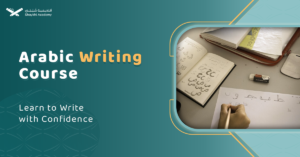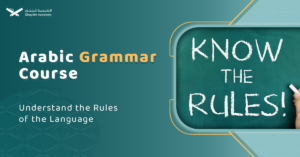Leen letters are a specific category within Arabic and Tajweed phonetics. Leen letters are characterized by the presence of a “yaa” or “waaw” letters with sukoon above them (a silent mark) ( ْ), and the letter preceding these “yaa” or “waaw” letters always bears a fatha (short vowel sound) ( َ).
Due to Leen letters’ distinctive features, Leen letters are often mistakenly identified with other Quranic pronunciation rules, particularly natural Madd letters or Madd Leen.
Consequently, this article aims to clarify the distinctions between Leen letters and these other rules, providing a comprehensive guide to accurately master the pronunciation of each.
What are the Leen letters?
Leen letters are only 2 letters, “yaa” or “waaw” that follow a particular pattern. They always have sukoon above them and they are preceded by a fatha sound.
In this specific condition, they are called Leen letters.
Why are they called Leen letters?
The reason why they are called Leen letters is the term “Leen” in Arabic signifies softness and smoothness. This accurately reflects the pronunciation of Leen letters, which are pronounced effortlessly and gently.
That’s why they are called “Leen letters”.
How to pronounce Leen letters in Arabic?
The way to pronounce the letter “waaw” is by shaping the lips into a rounded position, whereas “yaa” is pronounced by lifting the center of the tongue.
Whenever they fulfill the condition of the Leen letters mentioned above, and are not followed by sukoon, they are pronounced without a Madd.
The following Quranic verses provide illustrative examples of Leen letters and demonstrate their correct pronunciation.
1- An example of Leen waaw
In the verse “مَٰلِكِ يَوۡمِ ٱلدِّينِ” (Maaliki Yawmid-Deen) (Al-Fatiha – 4). The letter “waaw” in the word “yawm” is “saakin” (there is sukoon above it) and preceded by a fatha, in this case, this “waaw” is a “Leen waaw” and it’s pronounced with ease and without any effort, with no prolongation like mentioned above.
2- An example of Leen yaa
Similarly, in the verse “غَيۡرِ ٱلۡمَغۡضُوبِ عَلَيۡهِمۡ” (ghayril-maghdoobi ‘alaihim) (Al-Fatiha – 7). The letter “yaa” in the word “ghayr” has a sukoon above it and the letter before it has a fatha, the same with the “yaa” in the word “‘alaihim”. Both are “Leen yaa” and pronounced just by lifting the center of the tongue.
Common mistakes related to Leen letters.
There are some common mistakes that Quran learners often make while trying to pronounce Leen letters. The following are some of them:
1- Overdoing Leen letters while pronouncing:
Leen letters are soft and smooth like their name, so stressing on the letter while pronouncing it isn’t correct. These letters are supposed to be gentle and smooth. Don’t try to force them or make them sound harsh.
The key is to relax. When pronouncing “waaw”, simply round your lips slightly to let out the air. Do the same with “yaa” by gently raising the middle of your tongue.
For further confirmation, you can ask your Tajweed tutor for feedback or listen to recordings of experienced reciters (Shaykhs).
2- Prolongation in the Leen letters:
One of the most frequent stumbles for beginners of Quran recitation is prolonging the Leen letters. Leen letters have no prolongation in them. Just the normal time of saying the letters “yaa” and “waaw”. However, pronouncing it with prolongation is a common mistake.
This mistake stems from confusion between Leen letters, natural Madd letters, and Madd Leen (Madd al-Leen). While these Tajweed concepts are connected, they have crucial differences. Leen letters and the two types of Madd might share some features, but there are also clear distinctions that set them apart.
With that foundation laid, let’s go on a journey to explore the differences between each Tajweed rule.
The difference between Leen letters and natural Madd letters
This confusion between Leen and Madd is precisely why we’re diving into the nitty-gritty of their differences. By understanding these distinctions, you’ll be well-equipped to master the proper pronunciation of these letters and enhance your Quran recitation.
Therefore, we will now explain the main difference between Leen and Madd letters.
1- Leen letters:
These are just “yaa” and “waaw” with a sukoon on them but always preceded by a fatha. We don’t prolong them when reciting.
For example, in the verse “ذَٰلِكَ ٱلۡكِتَٰبُ لَا رَيۡبَۛ فِيهِۛ هُدٗى لِّلۡمُتَّقِينَ” (Zaalikal Kitaabu laa raiba feeh; hudal lilmuttaqeen) (Al-Baqarah -7). The letter yaa in the word (raiba) is “sakin” and preceded by a “fatha”, therefore it’s a Leen yaa. So it’s not prolonged like Madd letters which we will explain next.
2- Madd letters:
These include “alif” “waaw” and “yaa” with a sukoon as well. However, the main difference is the vowel sound before them. It has to match the letter itself: alif with a fatha, waaw with a damma, and yaa with a kasra. And because of this matching vowel sound, they get lengthened (prolonged) during recitation.
For example, the “basmala” “بِسۡمِ ٱللَّهِ ٱلرَّحۡمَٰنِ ٱلرَّحِيمِ” Bismillah hir rahman nir Raheem.
The letter “alif” in the word “alrahman” and the letter “yaa” in the word “alraheem”. They both have sukoon on them and the “alif” is preceded by a fatha and the “yaa” is preceded by a kasra. So, both are Madd letters, and they are prolonged when reciting them.
In short, Leen letters are just two specific sounds with a sukoon and fatha before them, while Madd letters can be any of the three main vowels with a sukoon, but only if the preceding vowel matches the letter itself. That’s why we hold the sound longer for Madd letters.
When to pronounce Leen letters with Madd and without Madd.
There’s a special case where Leen letters get extended (pronounced with Madd)
Normally, Leen letters (yaa and waaw with sukoon preceded by fatha) are short and not prolonged. But, if we take a natural pause during recitation on the word containing the Leen letter, right before the last letter, things change.
This pause makes the last letter silent (becomes saakin). In this situation, to avoid an awkward break in the sound, we prolong the Leen letter itself. It’s like we’re “borrowing” some of the pause time to extend the Leen for a smoother recitation.
1- An example of Madd Leen:
Let’s take a closer look at the verse “فَلۡيَعۡبُدُواْ رَبَّ هَٰذَا ٱلۡبَيۡتِ” “Faly’abudoo rabba haazal-bait”(Quraish – 3). Here, the letter “yaa” at the end of the word “albait” is a Leen letter. Normally, Leen letters are short. But, there’s a natural pause in recitation that falls right before this “yaa”
Because of this pause, the last letter “baa” becomes silent (saakin). To avoid an abrupt stop and make the recitation flow smoother, we prolong the sound of the “yaa” a bit. In this specific case, the Leen letter is pronounced with Madd due to the pause, even though it wouldn’t be otherwise.
2- An example of Leen letters:
Now, let’s look at the verse “وَٱلۡبَيۡتِ ٱلۡمَعۡمُورِ” “wal-baiti al-ma’moor”(At-tur – 4). Here, we have the same word “albait” again. But this time, there’s no natural pause before the final “baa” Because there’s no pause, the “baa” isn’t silent (it’s not saakin). Consequently, the “yaa” in “albait” remains a regular Leen letter and isn’t prolonged.
This comparison between the two verses perfectly illustrates how the presence or absence of a pause can influence how we pronounce Leen letters. By understanding these nuances, we can refine our recitation and achieve the intended flow and beauty of the Quran.
Tips for mastering Leen letters
There are some tips for mastering Leen letters and Tajweed rules in general and these are some of them:
1- Listen to a Shaykh’s recitation
Listening to an expert Shaykh reciting the Quran with proper Tajweed can significantly accelerate your learning and ensure you’re on the right track.
2- Practice makes perfect
Practice more and more every day. And most importantly, never stop practicing. Doing a little bit every day is more important than doing a lot someday.
3- Learn with a qualified Shaykh
Correcting your mistakes needs an expert and a qualified Shaykh who guides you to the right path and to master Tajweed and Quran recitation. Online Quran classes are one of the most affordable ways to learn the Quran from home.
Learn Tajweed rules with Shaykhi Academy’s professional tutors!
Struggling with Tajweed? Shaykhi Academy can help! You can learn the rules of Tajweed online by joining our Online Tajweed Course. Get personalized guidance from Tajweed experts through our online classes.
Flexible scheduling and affordable prices make it easy to learn anywhere, anytime. Sign up today and see the difference in your recitation!
Why Choose Shaykhi Academy?
- Connect with highly qualified native tutors.
- Flexible scheduling to suit your busy lifestyle.
- Affordable classes tailored for all levels.
- Accessible from anywhere around the globe.
Discover Our Range of Courses:
- Arabic Noorani Qaida: Lay a solid foundation for Quranic studies.
- Online Quran Classes for Kids: Engaging lessons for lifelong learning.
- Tajweed Rules for Kids: Learn to recite with confidence.
- Quran Hifz for Kids: Step-by-step guidance to memorize the Quran.
- Quran for Adults: Introduce yourself to Quran reading and Tajweed rules.
- Online Arabic Courses: Master the language of the Quran.
- Islamic Studies: A wide range of topics related to Islam, including theology, law, Quranic studies, and Hadith.
Don’t Miss Out on Your Chance to Excel! Whether you’re a beginner or seeking advanced knowledge, Shaykhi Academy can guide you! Book your free trial now

Conclusion
Leen letters are “yaa” or “waaw” that have sukoon on them and are preceded by a fatha. They are pronounced smoothly without any stress on the letter that’s why they are called Leen letters.
Leen letters are not pronounced with any prolongation unless they come at the pre-last letter of the word and we pause naturally on it, in this case, we prolong this Leen letter and this prolongation is called Madd Leen.
The difference between Leen letters and natural Madd letters is natural Madd letters are any of the three main vowels (“alif” “waaw” “yaa”) with a sukoon, but only if the preceding vowel matches the letter itself (fatha for alif, damma for waaw, kasra for yaa). This matching sound is why they’re lengthened during recitation.
To master pronouncing these rules, you should listen a lot to experienced reciters, practice more, and Get feedback from qualified teachers to ensure you’re on the right track.
Eventually, by following these steps, you’ll gain the confidence and accuracy needed for an accurate Quran recitation inshallah.

















































